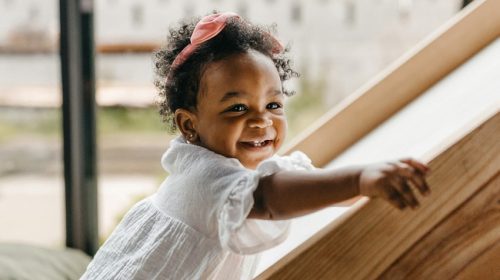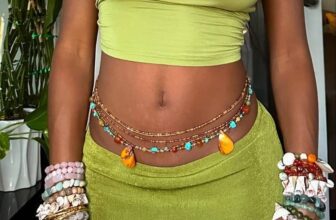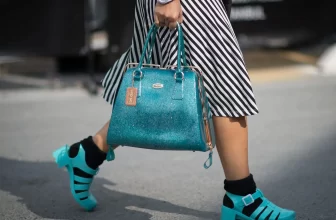What to Expect During Baby Ear Piercing
There’s no denying that all little ones are precious in their own way. Yet, there are few things cuter than a sweet pair of studs on a pint-sized fashionista!
If you’ve been thinking about getting your baby’s ears pierced, then you likely have a few questions.
What should you expect? Will there be a reaction? What kinds of tools and materials will they use?
We understand your concerns, and we’re here to put your mind at ease. Today, we’re sharing everything you need to know about baby ear piercing so you can make an informed decision for your little one.
Understanding Age Recommendations
There isn’t a specific rule that mandates the exact age that your child should be when you pay a visit to the jewelry store together. However, most experts recommend waiting until they’re at least four months old.
By this time, they should have received two tetanus shots if they’re up-to-date on their vaccinations. This can help reduce any risks associated with a child’s ear piercing. Keep in mind that while this is a good general guideline to follow, other groups, including the American Association of Pediatrics (AAP) recommend waiting until your child can effectively care for their piercing on their own.
Then, there are also cultural and religious norms to keep in mind. In some cultures, it’s considered customary to pierce a child’s ears much younger, while others expect parents to wait until they’re older.
While the risks of going ahead and piercing their ears as soon as possible are minimal, it’s important to understand that infections can occur at any age. If you wait until your tot is a little older, then they can actively participate in the cleaning and care process to minimize that possibility.
Choosing Where to Go
The most important aspect of a first-time ear piercing is to ensure that the facility you visit sets strict rules around equipment sterilization and employee techniques. Wondering where to get a great gift for daughter or baby’s ear pierced? Prioritize quality over any other aspect.
While it might be tempting to head straight to the local shopping mall and allow any jewelry store to take the reins, it’s critical to do your due diligence first. Ask your friends and family members where they’ve taken their children. Would recommend the same spot, and why?
Once you have a shortlist of places in mind, call or visit them to learn more about their tools, practices, and staff training requirements. If possible, check to see if your child’s nurse or pediatrician can do the job. While this service is usually provided at an extra cost (likely uncovered by insurance), it’s worth it for peace of mind.
Specific Equipment Considerations
At many jewelry stores and kiosks, you’ll find that employees will use a piercing gun. Though they may explain that it’s more gentle on your little one’s ears, keep in mind that they aren’t nearly as easy to clean or sterilize.
Instead, look for a provider that uses a needle. If you aren’t sure what types of tools they use, then make sure to ask.
Baby Ear Piercing: Choosing the Right Accessories
You’ve chosen a great spot, and the big day is here. When you arrive at the facility, it’s important to understand what types of jewelry and accessories the piercer plans to use.
A gold-post earring is ideal, as it can help reduce the risk of infection. It’s also gentler on their skin than other types of metal, which can help minimize the risk of an allergic reaction. Once you’re sure that’s what they’re using, you can pick out the perfect studs.
 Image Source: Healthline.com
Image Source: Healthline.com If your child is old enough, encourage them to voice their opinion on what they’d like. You can find many different types of kid’s jewelry made just for the smallest style-setters. The only types to avoid are oversized or dangly sets, as they could get caught in your child’s hair or clothing.
If that happens, it can damage or tear their delicate earlobe, which can be incredibly painful. Make sure any set you choose also comes with two screw-back earrings. Backs that slide on can easily become loose and fall out.
Not only could this mean losing your expensive pieces, but it could also pose a choking hazard if the backs land near your little one’s hands.
Managing Discomfort
As much as we’d like it to be the case, the reality is that piercing isn’t totally painless. Your child will experience a slight degree of discomfort, and they may even shed a few tears.
Thankfully, there are a few things you can do to keep them as comfortable as possible. First, choose a piercer who is well-trained and uses premium-quality tools. Someone who is new at the job or unqualified could perform the procedure incorrectly or too slowly, which can elevate your child’s pain level.
If possible, ask the piercer about placing a cold pack on your child’s ear both before and immediately after the piercing. This can help numb the area for a short while.
What About Aftercare?
Baby piercing aftercare is the most critical part of this entire process. It’s imperative to understand what’s expected, what steps to follow, and how long you need to perform them. Here are all of the elements to keep in mind.
Cleaning Your Child’s Ears
For at least one week after the piercing, clean around the jewelry with rubbing alcohol or antibiotic ointment two times each day. If the piercer sent you home with a special cleaning solution, then use that. You can use a clean cotton pad to apply the solution.
Rotating the Piercings
Rotating your child’s piercings twice a day can also help prevent infection. If they’re allowed to stay in one place for too long, then sweat, dirt, and grime can accumulate around the posts.
When this happens, it can be more difficult to clean around the jewelry. Make sure your hands are thoroughly washed and dried before you touch your child’s ears. Note that if the piercing appears stuck and doesn’t turn easily, then this could be a sign of infection.
Changing the Earrings
Your little one will undoubtedly be excited about swapping their current earrings out for a bevy of new styles. However, it’s best to leave their first set in for at least four to six weeks.
This is because the process of changing them out involves lots of touching and transferring of materials. Their sensitive ears are especially delicate after a piercing, and that tiny post hole is essentially an open wound. It’s critical to keep it as sterile and untouched as possible.
Navigating Keloids
If you’ve researched ear piercing for children, then you’ve likely read about keloids. In short, these are areas of thick and raised scar tissue that grows as your skin heals from an injury. In this case, piercing is considered an injury to the skin.
While some researchers explain that keloids are more common in children who wait to get their ears pierced after age 11, they can occur at any age. If keloids run in your family, then it’s best to avoid piercing your child’s ears. If you have your heart set on the idea, then seek to do it before their 11th birthday.
Signs of an Infection
While you don’t want to think about your sweet baby’s ears getting infected, it’s important to know the signs. In most cases, the healing process is successful and does not result in any additional discomfort.
However, improper cleaning or aftercare techniques could heighten your risk of infection. A few of the signs to look for include:
- Redness near the piercing
- Warmness at the site
- Inflammation
- Oozing
Some children will also develop a fever if their piercing becomes infected. If they have a fever of 100.4 or higher, then it’s best to call their pediatrician. Even if they don’t run a fever, it’s still smart to reach out if their symptoms last for longer than two days.
In the meantime, you can clean their ears with a sterile saline solution. Avoid using hydrogen peroxide or rubbing alcohol, as these could worsen any type of irritation.
Help Your Little One Look and Feel Their Best
The decision to pierce a child’s ears is a personal one that looks different for every family. If you decide to go this route, then it’s important to do your homework, first.
Make sure the facility you choose is skilled and experienced in baby ear piercing, and that the piercer is well-trained and qualified. The tools should all be sterile, and the studs you select should be safe and appropriate for your child’s age. Then, once the procedure is complete, you can begin the aftercare process together.
Photo Courtesy






